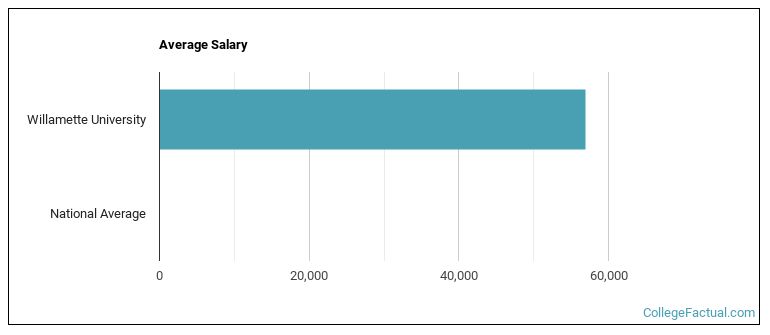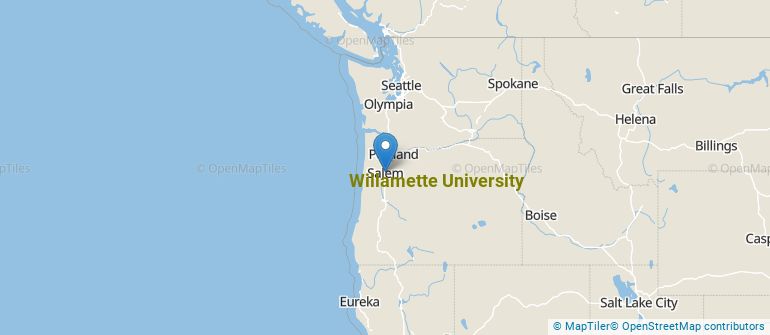 by our College Data Analytics Team
by our College Data Analytics TeamExplore the best ranked schools for the programs you are most interested in.
Willamette is ranked #1,350 out of 2,152 schools in the nation for overall quality on College Factual's 2025 Best Colleges list. This is an improvement over the previous year, when Willamette held the #1,415 spot on the Best Overall Colleges list.
Willamette is also ranked #18 out of 29 schools in Oregon.
When it comes to admittance, Willamette University is somewhat selective. Its acceptance rate is 81%, which means you'll face some strong competition during the admissions process. Do what you can to make your application stand out.
The student to faculty ratio is often used to measure the number of teaching resources that a college or university offers its students. The national average for this metric is 15 to 1, but at Willamette it is much better at 11 to 1. That's good news for students who want to interact more on a personal level with their teachers.
Another measure that is often used to estimate how much access students will have to their professors is how many faculty members are full-time. The idea here is that part-time faculty tend to spend less time on campus, so they may not be as available to students as full-timers.
The full-time faculty percentage at Willamette University is 72%. This is higher than the national average of 47%.
Willamette University has a freshmen retention rate of 83%. That's a good sign that full-time students like the school and their professors enough to want to stick around for another year. It's also a sign that the admissions team did a good job in choosing applicants who were a good fit for the school.
Students are considered to have graduated on time if they finish their studies within four years. At Willamette the on-time graduation rate of first-time, full-time students is 67%. That is great when compared to the national average of 33.3%
Find out more about the retention and graduation rates at Willamette University.
During the 2017-2018 academic year, there were 1,302 undergraduates at Willamette with 1,264 being full-time and 38 being part-time.
| $0-30 K | $30K-48K | $48-75 | $75-110K | $110K + |
|---|---|---|---|---|
| $22,047 | $21,446 | $25,489 | $29,496 | $35,784 |
The net price is calculated by adding tuition, room, board and other costs and subtracting financial aid.Note that the net price is typically less than the published for a school. For more information on the sticker price of Willamette, see our tuition and fees and room and board pages.
It's not uncommon for college students to take out loans to pay for school. In fact, almost 66% of students nationwide depend at least partially on loans. At Willamette, approximately 45% of students took out student loans averaging $7,750 a year. That adds up to $31,000 over four years for those students.

See which majors at Willamette University make the most money.
Get more details about the location of Willamette University.

Contact details for Willamette are given below.
| Contact Details | |
|---|---|
| Address: | 900 State St, Salem, OR 97301 |
| Phone: | 503-370-6300 |
| Website: | www.willamette.edu/ |
| Most Popular Majors | Bachelor’s Degrees | Average Salary of Graduates |
|---|---|---|
| Business Administration & Management | 101 | NA |
| Law | 96 | NA |
| Economics | 40 | $45,993 |
| General Psychology | 33 | $29,678 |
| General Biology | 30 | $25,100 |
| Natural Resources Conservation | 28 | $28,697 |
| Political Science & Government | 24 | $35,162 |
| Health & Physical Education | 23 | NA |
| Communication & Media Studies | 19 | $31,472 |
| History | 18 | $22,555 |
If you’re considering Willamette University, here are some more schools you may be interested in knowing more about.
Curious on how these schools stack up against Willamette? Pit them head to head with College Combat, our free interactive tool that lets you compare college on the features that matter most to you!
Footnotes
*The racial-ethnic minorities count is calculated by taking the total number of students and subtracting white students, international students, and students whose race/ethnicity was unknown. This number is then divided by the total number of students at the school to obtain the racial-ethnic minorities percentage.
References
More about our data sources and methodologies.